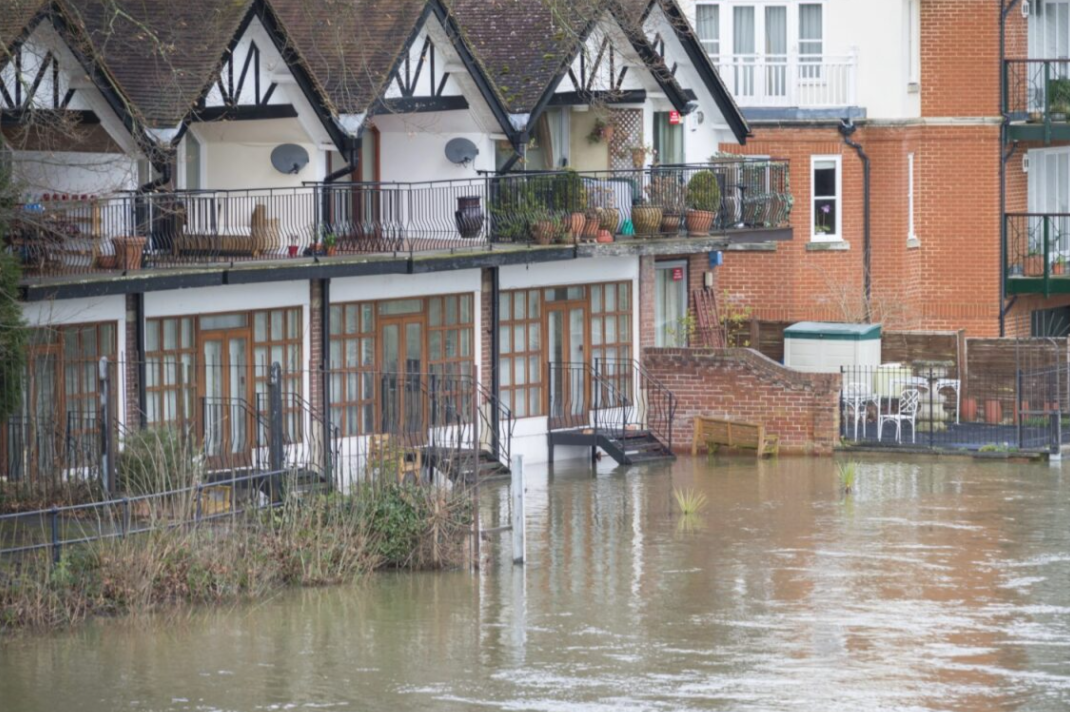The Role of the Media in Communicating Weather and Climate Stories and Impacts
kathryn.wolak
26 August 2025
The media plays a crucial role in shaping public perception and understanding of weather and climate-related issues. Whether it is daily weather forecasts or news reports, the media serves as a key intermediary between scientific experts and the general public. Given the increasing frequency and intensity of extreme weather events in the UK due to climate change, the importance of effective communication has never been greater.
At the same time, broadcast meteorologists have a unique position as trusted communicators of weather and climate information. They have the expertise to interpret complex meteorological data and present it in an accessible and engaging way. However, their role is not just limited to delivering forecasts; they can also help bridge the gap between climate science and public understanding.
This article explores the broader role of the media in communicating weather and climate stories and the specific contributions that broadcast meteorologists and weather presenters can make in this field. It also explores what will shape the communication of weather and climate in future.
1. Providing Timely and Accurate Information
One of the primary functions of the media is to provide timely and accurate weather forecasts. Daily weather bulletins help people plan their day, from deciding what to wear to making travel plans. More importantly, during extreme weather events such as storms, floods, and heatwaves, timely and reliable information can be life-saving.

The media is increasingly multi-platform and uses television, social media, podcasts, and websites to disseminate crucial information about impending weather hazards. It plays a critical role in ensuring public safety and preparedness such as communicating weather warnings and areas most at risk and the most likely time of impacts.
2. Raising Awareness of Climate Change
While weather refers to short-term atmospheric conditions, climate represents long-term patterns. The media is instrumental in educating the public about climate change, its causes, and its consequences. Climate change is a complex and sometimes a politically charged issue, making effective communication a challenge but all the more important.
The media can help raise awareness about climate change in several ways:
• Explaining Scientific Concepts: Many people may not fully understand the difference between weather and climate or why our warming planet is leading to more extreme weather events. Weather presenters can simplify complex scientific concepts and make them more accessible to the general public.
• Highlighting Impacts: From more intense storms to prolonged droughts, the media can document and showcase real-world climate impacts. This helps people connect abstract climate science with tangible effects in their communities.
• Covering Climate Policies: Climate action requires policy changes at local, national, and international levels. Through news coverage and reporting, the media can help track government actions; international climate agreements; and corporate sustainability efforts to keep the public informed.
3. Informing Policy and Public Response
A well-informed public can influence policy decisions. When the media provides clear and compelling coverage of climate-related issues, it can help encourage community engagement and in turn, drive policy change.
For example, in the aftermath of a devastating flood, media coverage often highlights the need for better infrastructure; stricter environmental regulations; and improved emergency response plans. Public pressure, driven by widespread media coverage, can push policymakers to act on climate resilience and adaptation measures.
These events attract attention as the audience wants to know how and why something happened. Broadcast meteorologists are trusted to establish the facts, which helps inform public and political debate.
Furthermore, media outlets can provide platforms for experts, activists, and policymakers to discuss climate solutions. Debates, interviews, and panel discussions help inform the public about policy options and encourage proactive measures.
4. Combatting Misinformation and Conspiracy Theories
Misinformation about climate change can spread quickly, particularly on social media. Some climate change sceptics and interest groups attempt to downplay the severity of climate issues, creating confusion among the public. The media works hard to build trust with viewers to work against these falsehoods and has a responsibility to combat misinformation by:
• Fact-checking claims: Journalists can investigate and debunk false narratives about climate change and weather events.
• Using credible sources: Reporting should rely on established scientific institutions such as the IPCC (Intergovernmental Panel on Climate Change), UK Met Office or RMetS.
• Providing context: Some news stories about cold weather events, for example, may be misused to question global warming. The media can provide the necessary context to explain why extreme cold does not contradict climate change.
5. Connecting Local and Global Climate Issues
While climate change is a global issue, its impacts are often felt locally, but so often people don’t realise. This is where the media can be essential in helping make that link in connecting these scales by illustrating how global trends affect specific communities.
By combining local storytelling with broader climate science, the media can help people understand that climate change is not just a distant problem; it is something that affects their daily lives.
To make this issue more relatable to audiences, the media can cover the local consequences such as increased flooding in coastal cities, in context to stronger hurricanes in the Gulf of Mexico.
The role of weather presenters in communicating weather and climate stories
Broadcast meteorologists and Weather Presenters hold a unique position as trusted voices in the field of weather and climate communication. Their daily presence on TV and social media makes them accessible and familiar to the public. They can play a crucial role in informing and educating people about both immediate weather threats and long-term climate trends.
1. Bridging the Gap Between Science and the Public
Many people may not regularly follow scientific reports on climate change, but they do tune in to weather forecasts. Weather presenters can use this opportunity to incorporate climate information into their output.
For example, during a heatwave, a weather presenter might explain how rising global temperatures are making heatwaves more frequent and intense. This contextualises the event within the broader framework of climate change.
2. Communicating Weather Extremes and Their Causes
As extreme weather events become more common, meteorologists are in a key position to explain why they are happening. Instead of merely reporting on record-breaking temperatures or storm tracks, they can provide insights into the larger trends driving these changes.

Tools such as “climate attribution” studies allow weather presenters to show how specific extreme weather events are influenced by climate change. For example, following Storm Éowyn, a World Weather Attribution study enabled news outlets to explain how our warming planet is impacting autumn and winter storms. Climate change is making rainfall associated with storms in the UK and Ireland both more intense and more likely. The study helped to quantify the impacts to viewers, confirming that winter and autumn storms are depositing about 20% more rainfall in the UK and Ireland due to climate change.
3. Addressing Climate Misconceptions
Some people mistakenly believe that cold weather disproves climate change. Meteorologists can clarify these misconceptions by explaining phenomena like the polar vortex, which can cause extreme cold in some regions even as the planet warms overall.
By incorporating educational segments into their output, weather presenters can counter misinformation and help audiences develop a clearer understanding of climate science.
4. Utilising Digital and Social Media
With the rise of digital media, meteorologists have more tools than ever to engage with audiences. Social media platforms like Instagram and TikTok allow meteorologists to share quick updates, answer public questions, and debunk climate myths.
For example, some broadcasters create explainer videos that break down complex weather events or climate trends in a visually engaging way. Others use interactive graphics and data visualisations to make climate science more accessible.
5. Collaborating with Scientists and Journalists
To enhance the quality of climate communication, meteorologists can collaborate with climate scientists and journalists. By working together, they can ensure that the information presented to the public is scientifically accurate, engaging, and easy to understand.
Some meteorologists have also taken on roles as climate journalists, producing in-depth reports on climate-related issues. This blending of meteorology and journalism strengthens the overall quality of climate coverage.
What will shape the communication of weather and climate in future?
The future of weather and climate communication will be shaped by a blend of advancing technology, environmental factors, and cultural shifts.
Technologically, AI and machine learning are improving climate modelling and enhancing forecast accuracy. Additionally, advances in high-resolution satellite imagery enable more detailed tracking of weather patterns and climate events. Social media and apps facilitate real-time updates, support crowdsourced weather reports, and viral messaging. The use of automated alerts, such as the emergency alert triggered during Storm Éowyn, reflects a growing expectation for personalised and national communication. These tools continue to advance; augmented reality (AR) is increasingly used by broadcasters, like The Weather Channel in the US, to create immersive, visual explanations of weather forecasts.
Culturally, there is growing concern about climate change, particularly among younger generations. Climate literacy is gradually becoming the norm as education settings integrate it as a core subject. This is supported by initiatives such as the Climate Ambassador Scheme which is funded by the Department for Education. The scheme supports the delivery of climate action plans in nurseries, schools and colleges through free access to expertise on climate action and sustainability.
However, misinformation and geopolitical instability are delaying action. A recent article in The Guardian1 suggests that while the majority of the population wants climate action, people wrongly believe that only a minority share their views. This contributes to a sense of “eco-inertia,” where climate change is either not a priority or considered someone else’s responsibility due to the current economic environment. Although the importance of addressing climate change is recognised, current priorities often conflict with this. There is also confusion about how individuals can make a difference, indicating a key role for the media. Societal financial instability understandably prioritises self-preservation, with managing health and finances taking precedence.
Environmentally, the planet is experiencing increasing climate risk, evidenced by more frequent and severe extreme weather events, including storms, heatwaves, and floods. Climate adaptation is likely to become the norm, incorporating new technologies like smarter infrastructure and smart homes. Buildings, towns, and cities will likely be designed to adapt to the changing climate. The environment can also influence cultural challenges; wellbeing and nature are interconnected, with access to natural spaces providing health benefits. Sustainability choices, such as second-hand clothing, plant-based diets, and public transport, can be more affordable, driving sustainability and saving money simultaneously.
Conclusion
In conclusion, the media plays a crucial role in communicating weather and climate stories. It informs the public, influences policy, and combats misinformation. Broadcast meteorologists are particularly vital as trusted communicators, bridging the gap between scientific research and public understanding by providing accurate information on both immediate weather threats and long-term climate trends.
The UK faces escalating climate risks, including increased flooding, more frequent and intense heat waves, coastal erosion, and more severe Atlantic storms. The pace of climate change is exceeding adaptation efforts, leading to higher costs across health, economy, and the environment. As climate change impacts communities globally, the need for clear, effective, and science-based communication intensifies. By leveraging their expertise and platforms, the media, especially broadcast meteorologists, can foster a well-informed and climate-resilient society. Communication styles must be regularly adapted to reflect evolving technical, environmental, and cultural trends.
In summary, the media’s role in communicating weather and climate stories is paramount, offering significant opportunities and benefits through positive action. Explaining that climate action represents a long-term saving rather than an economic burden is crucial. Positive action can drive economic growth, and this powerful, often untold economic narrative presents a real opportunity during a cost-of-living crisis.
It is essential to recognise that climate discourse is rapidly evolving. By 2050, current scenarios will likely be integrated into daily life, deemed outdated, and adaptation will become the primary focus.






